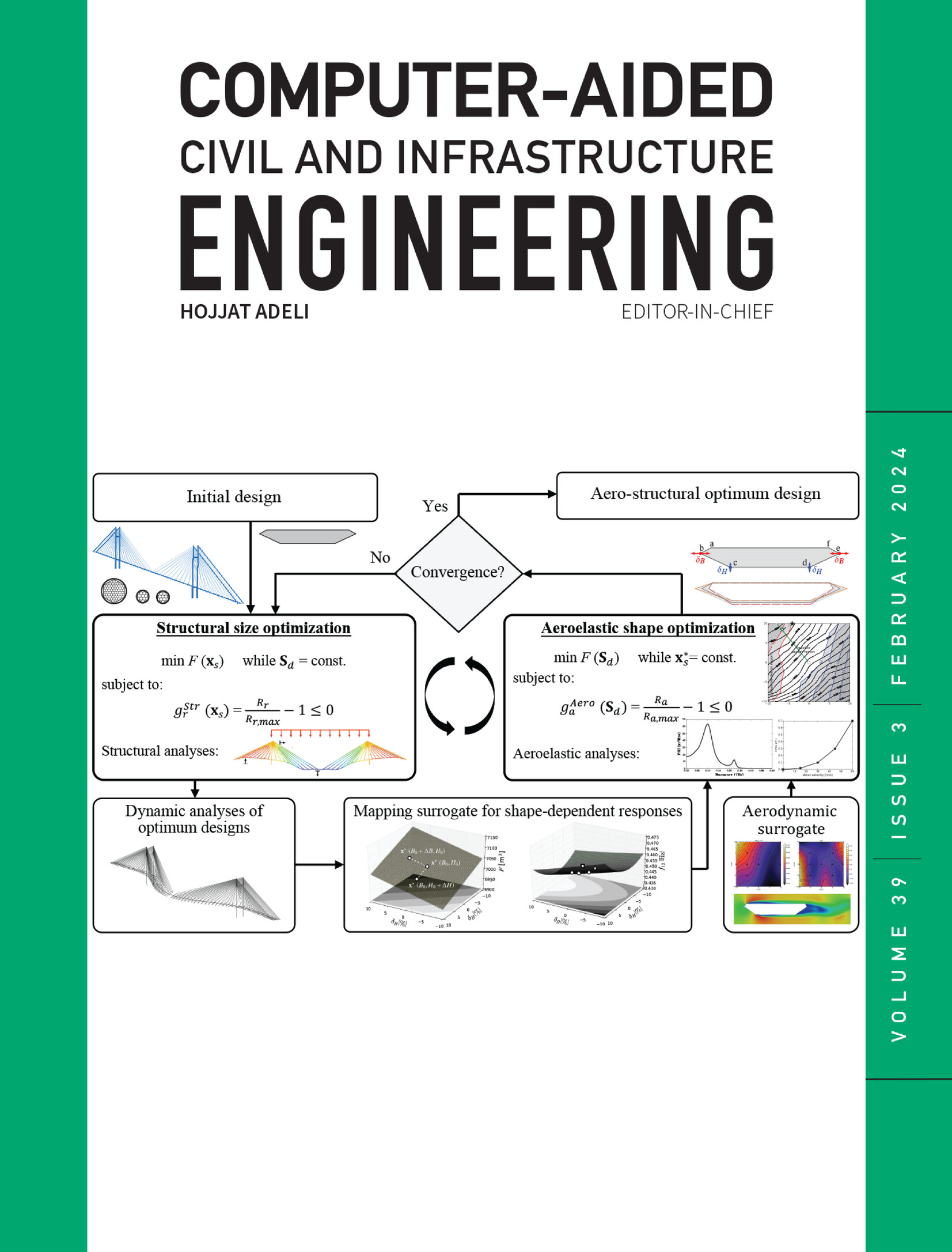基于视觉的3D设计模型自适应跨域在线产品推荐
IF 8.5
1区 工程技术
Q1 COMPUTER SCIENCE, INTERDISCIPLINARY APPLICATIONS
引用次数: 0
摘要
三维(3D)数字设计广泛应用于建筑、工程、咨询、运营和维护(AECOM)行业,以加强利益相关者之间的协作。虽然推荐系统通常用于促进电子商务网站的购买,但由于尺寸和风格的差异,没有一个系统涉及从3D建筑设计模型向用户推荐在线产品。本研究提出了一种基于视觉的自适应跨领域在线产品推荐方法,VacRed,用于3D建筑设计模型。首先,提出了一种跨领域的方法,将设计模型转换为电子商务图像,解决它们之间在尺寸和风格上的差异。其次,引入自适应机制,解决生成模型训练过程中由于生成器权值变化而导致的图像质量不稳定问题。第三,开发了基于深度学习的跨领域产品推荐系统,为给定的建筑设计产品推荐top k相关的在线产品。最后,通过实验验证了VacRed方法的有效性。实验结果表明,该方法具有良好的性能,准确率达到87.20%,平均精度达到83.65%。本研究有效地连接了AECOM行业的两个主要阶段,设计和采购,以及两个大社区,设计和电子商务。本文章由计算机程序翻译,如有差异,请以英文原文为准。
Vision‐based adaptive cross‐domain online product recommendation for 3D design models
Three‐dimensional (3D) digital design is extensively adopted in the architecture, engineering, consulting, operations, and maintenance (AECOM) industry to enhance collaboration among stakeholders. Although recommendation systems are commonly employed to facilitate purchasing in e‐commerce websites, none involves recommending online products to users from 3D building design models due to dimensional and stylistic discrepancies. This study proposes a vision‐based adaptive cross‐domain online product recommendation method, VacRed, for 3D building design models. First, a cross‐domain approach is proposed to transform design models into e‐commerce images, addressing discrepancies in dimension and style between them. Second, an adaptive mechanism is introduced to solve the issue of image quality instability caused by variations in generator weights during the training process of generative models. Third, a cross‐domain product recommendation system is developed based on deep learning to recommend the top k relevant online products for a given building design product. Finally, experiments were conducted to ascertain the effectiveness of the VacRed method. The experimental results of this method demonstrate its excellent performance, achieving a precision rate (PR ) of 87.20% and a mean average precision of 83.65%. This study effectively connects two main stages in the AECOM industry, design and purchasing, and two large communities, design and e‐commerce.
求助全文
通过发布文献求助,成功后即可免费获取论文全文。
去求助
来源期刊
CiteScore
17.60
自引率
19.80%
发文量
146
审稿时长
1 months
期刊介绍:
Computer-Aided Civil and Infrastructure Engineering stands as a scholarly, peer-reviewed archival journal, serving as a vital link between advancements in computer technology and civil and infrastructure engineering. The journal serves as a distinctive platform for the publication of original articles, spotlighting novel computational techniques and inventive applications of computers. Specifically, it concentrates on recent progress in computer and information technologies, fostering the development and application of emerging computing paradigms.
Encompassing a broad scope, the journal addresses bridge, construction, environmental, highway, geotechnical, structural, transportation, and water resources engineering. It extends its reach to the management of infrastructure systems, covering domains such as highways, bridges, pavements, airports, and utilities. The journal delves into areas like artificial intelligence, cognitive modeling, concurrent engineering, database management, distributed computing, evolutionary computing, fuzzy logic, genetic algorithms, geometric modeling, internet-based technologies, knowledge discovery and engineering, machine learning, mobile computing, multimedia technologies, networking, neural network computing, optimization and search, parallel processing, robotics, smart structures, software engineering, virtual reality, and visualization techniques.

 求助内容:
求助内容: 应助结果提醒方式:
应助结果提醒方式:


